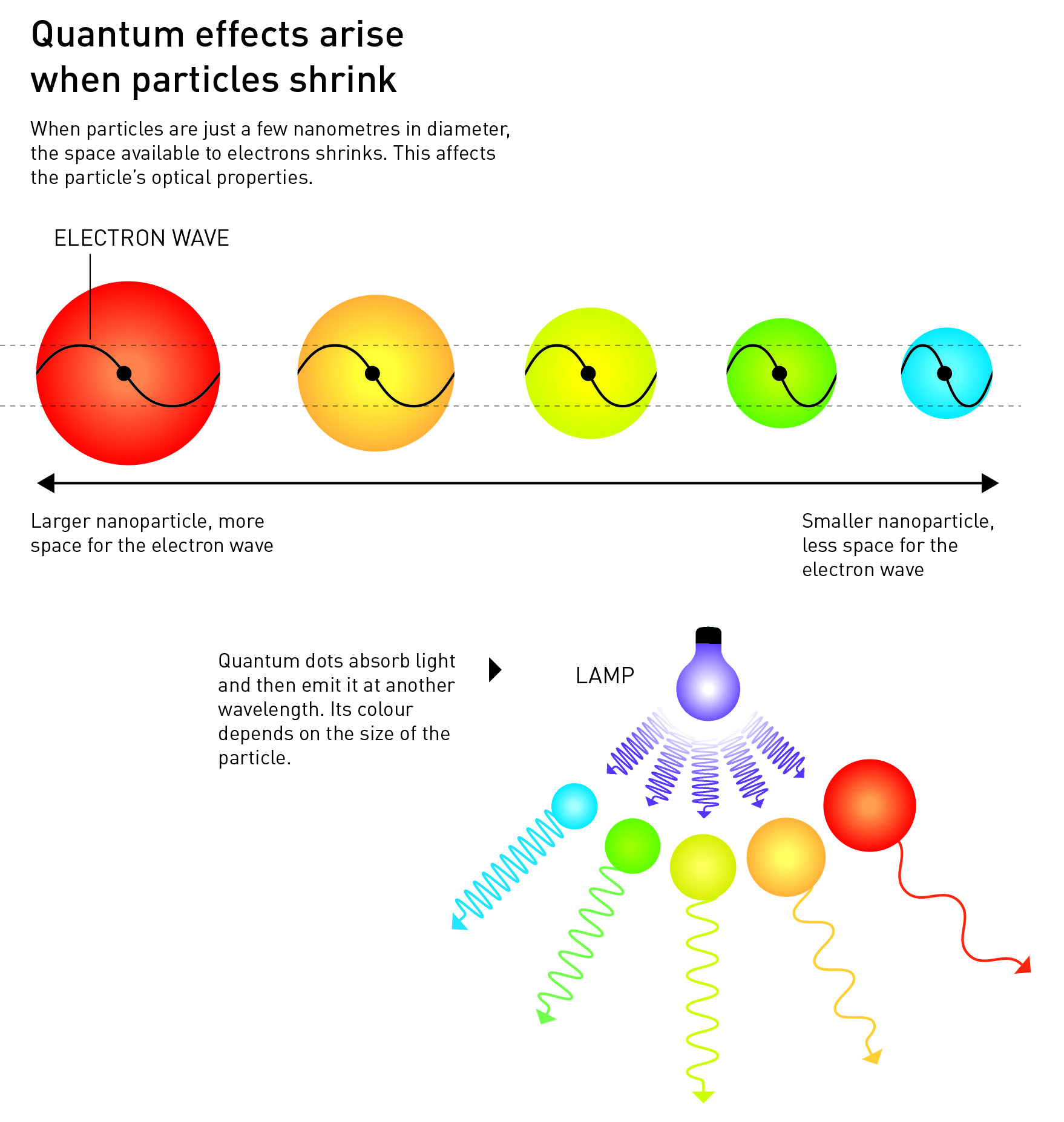Quantum Confinement: Unleashing the Potential of Nanoscale Materials
What is Quantum Confinement?
Quantum confinement is a phenomenon that occurs when the dimensions of a material are reduced to the nanoscale, typically in the range of 1-100 nanometers. At this scale, the electronic and optical properties of the material become strongly dependent on its size and shape, leading to unique and tunable characteristics that differ from those of the bulk material.

Real-World Examples of Quantum Confinement
Quantum confinement has enabled the development of various real-world materials and products, revolutionizing different industries. Here are a couple of examples:
- Quantum Dot Displays: Quantum dots are being used in next-generation displays, such as Samsung's QLED TVs and TCL's QLED TVs. These displays leverage the size-dependent emission properties of quantum dots to achieve a wide color gamut, high brightness, and improved energy efficiency compared to traditional LCD and OLED displays.
- Medical Imaging Probes: Quantum dots are being explored as fluorescent probes for medical imaging applications. For example, Siemens Healthineers has developed a quantum dot-based imaging agent called Qdot 800 Vascular Label, which is used for intraoperative fluorescence imaging of blood vessels. The bright and stable fluorescence of quantum dots enables high-resolution imaging and improved surgical outcomes.
Types of Quantum Confined Structures
Quantum confinement can occur in various nanostructures, each with a different degree of confinement:
- Quantum Dots: Quantum dots are zero-dimensional nanostructures where the charge carriers (electrons and holes) are confined in all three spatial dimensions. They exhibit size-dependent optical and electronic properties, making them promising for applications in optoelectronics, bioimaging, and quantum computing.
- Quantum Wires: Quantum wires are one-dimensional nanostructures where the charge carriers are confined in two spatial dimensions. They exhibit unique electronic properties, such as enhanced carrier mobility and density of states, making them attractive for applications in nanoelectronics and energy harvesting.
- Quantum Wells: Quantum wells are two-dimensional nanostructures where the charge carriers are confined in one spatial dimension. They are commonly used in optoelectronic devices, such as laser diodes and light-emitting diodes (LEDs), due to their ability to emit light with high efficiency and tunability.
Effects of Quantum Confinement
Quantum confinement leads to several remarkable effects in nanoscale materials:
Increased Band Gap
As the size of a material is reduced to the nanoscale, the band gap between the valence and conduction bands increases. This increase in band gap leads to a blue shift in the absorption and emission spectra of the material, enabling the tuning of optical properties by controlling the size of the nanostructure.
Enhanced Exciton Binding Energy
Quantum confinement enhances the binding energy of excitons, which are electron-hole pairs formed upon light absorption. The increased exciton binding energy results in stronger light-matter interactions and more efficient light emission, making quantum confined structures ideal for optoelectronic applications.
Discrete Energy Levels
In quantum confined structures, the energy levels become discrete rather than continuous. This discretization of energy levels leads to unique electronic and optical properties, such as sharp absorption and emission peaks, enabling the development of highly selective and sensitive devices.
Applications of Quantum Confined Structures
Quantum confined structures have found applications in various fields, leveraging their unique properties:
Optoelectronics
Quantum dots and quantum wells are widely used in optoelectronic devices, such as LEDs, laser diodes, and photodetectors. The tunable optical properties of these structures enable the development of highly efficient and color-tunable light sources, as well as sensitive and selective photodetectors for a wide range of applications, from displays to optical communications.
Bioimaging and Biosensing
Quantum dots have emerged as promising probes for bioimaging and biosensing applications. Their bright and stable fluorescence, narrow emission spectra, and resistance to photobleaching make them superior to traditional organic dyes. Quantum dots can be functionalized with targeting ligands to enable specific labeling of biomolecules and cells, allowing for highly sensitive and multiplexed detection.
Quantum Computing and Information Processing
Quantum dots and other quantum confined structures are being explored as building blocks for quantum computing and information processing. The discrete energy levels and long coherence times of these structures make them suitable for encoding and manipulating quantum information. Quantum dots can be used as qubits, the fundamental units of quantum information, enabling the development of scalable and fault-tolerant quantum computers.
Challenges and Future Perspectives
Despite the remarkable progress in the field of quantum confined structures, several challenges need to be addressed for their widespread application. One of the main challenges is the precise control over the size, shape, and composition of these nanostructures, which is crucial for achieving desired properties and reproducibility. Additionally, the integration of quantum confined structures into functional devices and systems remains a complex task, requiring advanced fabrication and assembly techniques.
Future research in quantum confined structures will focus on the development of novel synthesis and fabrication methods to achieve precise control over their properties. The exploration of new materials and heterostructures will enable the realization of multi-functional quantum devices with enhanced performance. Furthermore, the integration of quantum confined structures with other emerging technologies, such as nanophotonics and spintronics, will open up new avenues for innovative applications in sensing, computing, and communications.
Further Reading
Journal of Materials Chemistry A, Colloidal quantum dots for optoelectronics
Journal of Physics D: Applied Physics, Quantum dot optoelectronic devices: lasers, photodetectors and solar cells
Frontiers in Chemistry, Quantum Confinement of Atomic and Molecular Clusters in Carbon Nanotubes
